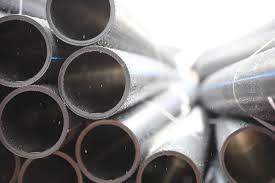Nov . 07, 2024 19:51 Back to list
Analyzing the Impact of PPR Factories on Production Efficiency and Innovation Strategies
Understanding PPR Factories A Comprehensive Overview
In recent years, the term PPR (Polypropylene Random Copolymer) has gained significant traction in the manufacturing and construction industries, particularly concerning piping systems. PPR factories play a crucial role in the production of PPR pipes, fittings, and various applications, making them an essential part of modern infrastructure. This article explores the importance of PPR factories, their processes, advantages, and contributions to sustainability and safety.
What is PPR?
PPR is a type of plastic made from polypropylene that is characterized by its excellent durability, resistance to corrosion, and ability to withstand high temperatures. As a result, PPR pipes have become a popular choice for plumbing, heating systems, and even industrial applications. PPR's unique properties allow it to be used in both residential and commercial buildings, making it a versatile material in today's construction landscape.
The Role of PPR Factories
PPR factories are specialized manufacturing facilities dedicated to the production of PPR products. The process begins with the selection of high-quality raw materials, primarily polypropylene granules. These granules undergo a series of processes, including extrusion and molding, to create various products, including pipes, fittings, and valves. Advanced machinery and technology are employed to ensure precision and maintain the highest quality standards.
The manufacturing process involves several stages
1. Raw Material Processing Polypropylene granules are fed into extruders, where they are heated and melted to form a homogeneous material.
2. Extrusion The molten material is then shaped into pipes using a die. This process requires precise temperature control to ensure optimal material properties.
3. Cooling and Cutting Once the pipes are formed, they are cooled to retain their shape. After cooling, they are cut to specified lengths and prepared for packaging.
ppr factories

4. Quality Control Strict quality control measures are implemented at every stage of production. Samples are rigorously tested for durability, pressure resistance, and other essential parameters to ensure they meet industry standards.
Advantages of PPR Products
PPR products offer numerous advantages compared to traditional materials such as galvanized steel or copper. One of the most significant benefits is their lightweight nature, making them easier to install and transport. Additionally, PPR pipes are more cost-effective over time because they are resistant to scaling and corrosion, leading to lower maintenance costs.
Another advantage is their energy efficiency. PPR pipes have good thermal insulation properties, which help reduce energy losses in heating systems. Moreover, they are safe for drinking water applications, as they do not leach harmful chemicals, making them environmentally friendly.
Sustainability and Eco-friendliness
PPR factories are increasingly adopting sustainable practices to minimize their environmental footprint. The production process emphasizes the recycling of materials, and PPR itself can be recycled at the end of its life cycle. This aspect aligns with global efforts to reduce plastic waste and promote circular economy principles. Furthermore, PPR pipes can create more efficient water and heating systems, contributing to overall resource conservation.
Conclusion
PPR factories are pivotal in the manufacturing of modern piping solutions that meet the diverse needs of various industries. Their ability to produce high-quality, durable, and sustainable products has solidified PPR's position as a material of choice in both domestic and industrial applications. As the demand for innovative and eco-friendly building materials continues to rise, PPR factories will remain at the forefront of this evolution, contributing significantly to sustainable infrastructure development worldwide.
In summary, understanding PPR factories and their role within the construction and manufacturing sectors allows us to appreciate the complexities and advantages of modern materials like PPR. With ongoing advancements in technology and sustainability practices, PPR factories are poised to lead the way toward a greener and more efficient future.
-
High-Quality PVC Borehole Pipes Durable & Versatile Pipe Solutions
NewsJul.08,2025
-
High-Quality PVC Perforated Pipes for Efficient Drainage Leading Manufacturers & Factories
NewsJul.08,2025
-
High-Quality PVC Borehole Pipes Durable Pipe Solutions by Leading Manufacturer
NewsJul.08,2025
-
High-Quality PVC Borehole Pipes Reliable PVC Pipe Manufacturer Solutions
NewsJul.07,2025
-
High-Quality UPVC Drain Pipes Durable HDPE & Drain Pipe Solutions
NewsJul.07,2025
-
High-Quality Conduit Pipes & HDPE Conduit Fittings Manufacturer Reliable Factory Supply
NewsJul.06,2025

